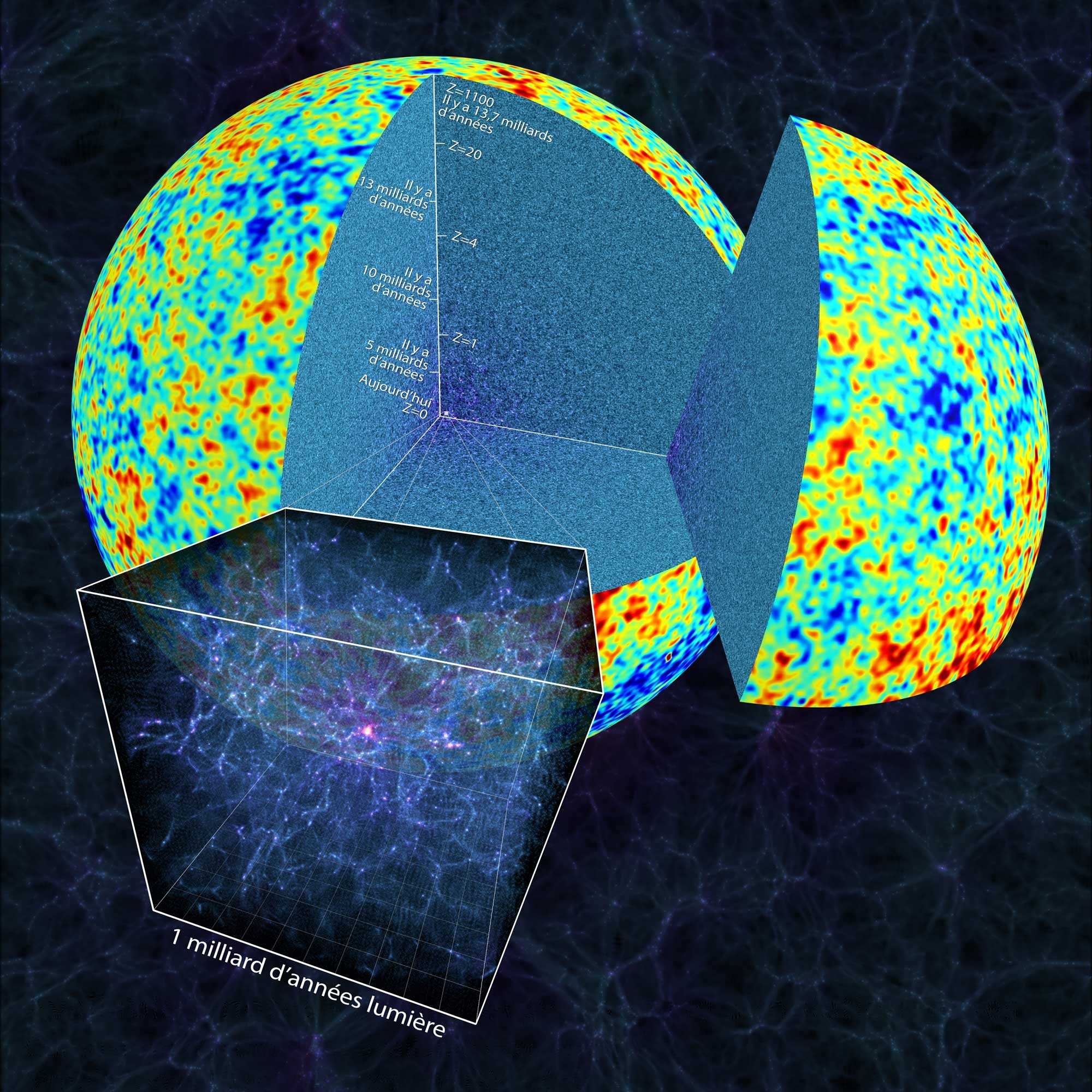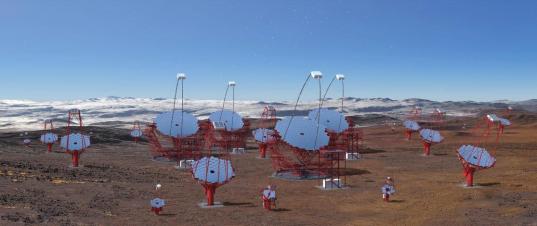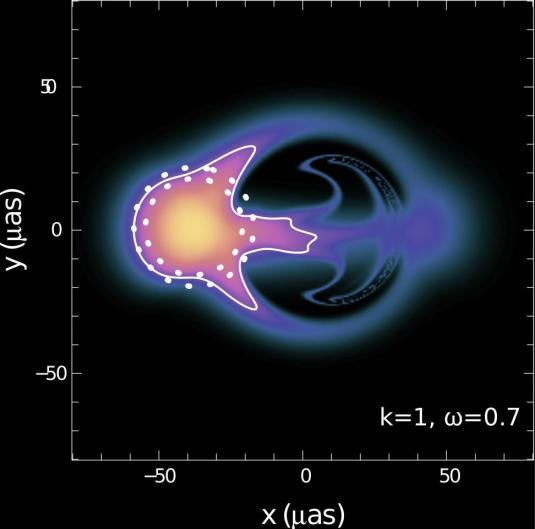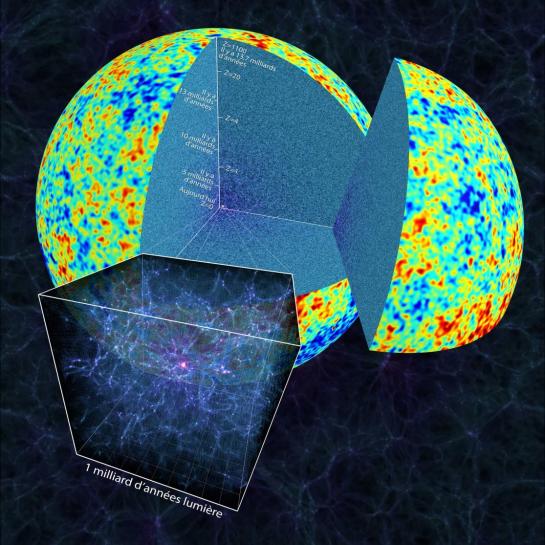
Laboratoire Univers et Théories
Présentation
Le Laboratoire Univers et Théories (LUTH) est une unité mixte de recherche (UMR 8102) du CNRS, de l’Observatoire de Paris et de l’Université de Paris. Le laboratoire regroupe une cinquantaine de personnes dont une petite moitié de chercheurs statutaires (CNRS, Universités, CNAP). L’activité scientifique du laboratoire se concentre essentiellement sur l’étude théorique des systèmes astrophysiques et sur leur modélisation. Une part des activités concerne également le traitement des données des observations à hautes énergies.
Le LUTH est actuellement organisé autour de trois thématiques. Le groupe Cosmologie étudie la formation des grandes structures de l’Univers et en particulier l’influence de la matière noire sur ce processus. L’équipe Phénomènes aux hautes énergies se consacre à la modélisation et à l’observation de objets comme les pulsars ou les noyaux actifs de galaxies. Une partie des activités concerne également la préparation des futurs instruments et la gestion des bases de données liées aux observations. La thématique Relativité et Objets Compacts se propose de travailler sur les différentes situations astrophysiques où la gravité est intense et décrite par la théorie d’Einstein. On pense principalement aux supernovae, aux étoiles à neutrons et aux trous noirs.
Par la diversité des sujets abordés, le LUTH est un laboratoire faisant la part belle à la pluridisciplinarité. Il regroupe des chercheurs aux profils variés venant de l’astronomie, de la physique théorique ou encore de la physique nucléaire. Cette richesse est illustrée par le fait que le laboratoire soit rattaché à trois instituts du CNRS (INSU, INP et IN2P3).
Le laboratoire a une forte composante numérique. Il s’agit non seulement de réaliser des simulations ou des calculs par l’outil informatique mais également de développer des outils performants, le plus souvent mis à la disposition de la communauté scientifique. Cette tâche bénéficie du soutien de l’équipe informatique du laboratoire qui comprend des ingénieurs spécialisés dans ce domaine.
Le LUTH, tout en étant fidèle à son ADN de laboratoire dédié à la modélisation et à la théorie, n’est pas déconnecté des grandes avancées observationnelles de l’astrophysique. Ses membres sont actifs dans de nombreux projets sol ou spatial, aussi bien dans les phases de préparation que d’exploitation des données. Ces activités peuvent prendre la forme de participation officielles aux projets (CTA, Euclid, HESS, LISA) ou d’échanges scientifiques moins formels (Gravity, Planck, PTA, SKA, Virgo...)
L’enseignement et la formation par la recherche font partie intégrante des missions de LUTH. Les chercheurs sont impliqués dans l’enseignement de leur spécialités à presque tous les niveaux des cursus universitaires ou des grandes écoles. Une dizaine de doctorants effectuent leur thèse au sein du laboratoire.
Les chercheurs du LUTH sont conscients de l’importance de la diffusion de la connaissance scientifique en direction du grand public. Cela peut prendre la forme de rencontres avec des scolaires, de participation à des conférences, en passant par des interventions dans les médias pour commenter les nouvelles scientifiques du moment.
Thèmes de recherche
Phénomènes aux Hautes Energies (Equipe PHE)
L’équipe PHE se consacre à l’étude des sources astrophysiques aux hautes énergies et de la physique des milieux moléculaires hors équilibre thermodynamique.
Relativité et Objets Compacts (Equipe ROC)
Les thèmes de recherche de l'équipe ROC concernent la théorie et les tests de la gravitation, les ondes gravitationnelles, la formation et les propriétés des astres compacts (étoiles à neutrons, trous noirs). Le développement d'outils numériques ouverts et originaux y tient une place importante.
Cosmologie : structures et origines (Equipe COS)
L'activité de l'équipe COS couvre plusieurs sujets de recherche en cosmologie parmi lesquels l'étude de l'Energie Noire et ses empreintes sur la formation et évolution des grandes structures cosmiques, travaux qui sont réalisé à l'aide de simulations numériques a haute-performance.
Autres contacts
Section de Meudon
Bâtiment du LAM (n°18)
5, place Jules Janssen
92190 MEUDON CEDEX



